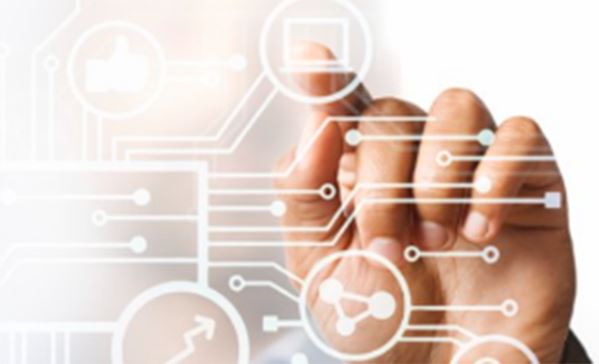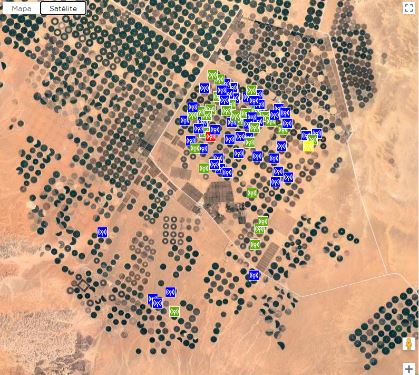Created by Raúl Alarcón – Hidroconta
![]()
In the water sector, whether for irrigation or domestic use, when facing a remote reading or automation project for a process or installation, the most important task is to select the device that best fits the user’s needs based on its characteristics and functionality. This selection should not only consider hardware (inputs, outputs, communication technology used) but also the simplicity with which information is received and displayed and necessary actions are executed for proper maintenance/supervision.

At Hidroconta, we have these principles in mind from the inception of all our new products. With these principles in mind, we have developed a range of devices aimed at remote control and remote reading to provide the best solution for our clients.
In the field of remote control, we have two unique devices that, due to their flexibility in terms of the number of inputs/outputs and communication capabilities, allow us to cover a wide range of use cases, making the system very easy to install and maintain.
DEMÉTER
Deméter is a remote control system originally designed for the automation of irrigation communities that, as we will see below, can be easily adapted to a multitude of applications due to its flexibility and scalability.
The system consists of two elements:
1.DEMÉTER 4H
A hardware capable of controlling the automatic or manual opening and closing of 4 valves, as well as obtaining the reading of 4 meters.
Additionally, it has:
- A general-purpose digital input that allows connection to, for example, anti-intrusion systems, pressure switches, alarms, etc.
- Two 4-20 mA analog inputs for connecting probes to measure water quality, pipe pressures, tank levels, etc.
- A potential-free digital output that allows remote activation of pumps, motorized gates, etc…
If more inputs/outputs are needed, the number can be expanded through its expansion port, allowing configurations of up to 20 valve outputs, 20 meter inputs, 5 digital inputs, 5 digital outputs, and 10 analog inputs. All powered by a single battery/solar panel and a single communication link.
Deméter 4H can be powered by a non-rechargeable lithium battery or a rechargeable lead battery with solar panel backup. The hardware includes the necessary circuitry to maximize charging efficiency and battery life.
From a communication standpoint, Deméter 4H can function as:
- An “end-point” with GPRS communications directly to the central server.
- An “end-point” with GPRS communications directly to the central serverAn “end-point” with GPRS communications directly to the central server.
- A concentrator with mixed GPRS and Radio communications.
This feature gives the Deméter system a fundamental advantage over other systems. Our concentrators not only act as communication devices but also as an additional system element (“end-point”), controlling devices directly connected to their hardware (valves, meters, probes…), thus reducing the number of devices in an installation and facilitating maintenance.
 2.DEMETER 1H:
2.DEMETER 1H:
A similar device to the previous one, intended for automating control points with fewer elements to control.
- It controls one valve and one meter, one digital input, and two analog inputs.
- It is powered by non-rechargeable lithium batteries and does not support solar panel power.
- It can communicate via GPRS or LoRa radio modulation.
It is important to highlight, as a differentiating element from other remote control devices, the integration of long-range radio communications with LoRa modulation in Deméter.
LoRa technology is a radio modulation over free-band frequencies (868 and 433 MHz) that achieves high reception sensitivity and great immunity to noise. As a result, we obtain very high communication distances (several kilometers depending on antenna visibility conditions) and the possibility of achieving very high coverage ratios in areas where stable links are traditionally not obtained with other wireless technologies.
To give an idea of the improvement obtained, we can state that under the same conditions (antenna visibility, frequency, and transmission power), LoRa doubles the communication distance compared to standard modulations. Practically speaking, this allows us to configure networks with a very low number of concentrators and with high flexibility in their location.
Additionally, this has enabled the development of redundancy in communications, another feature that significantly differentiates our product from similar ones. We can design our radio networks so that the “end-points” have visibility to two concentrators, one being the “primary” and the other the “secondary.” If the primary concentrator stops functioning for any reason, the remote units will automatically switch to communicate with their secondary concentrator without user intervention, and they will also automatically return to normal operation when the primary concentrator is back in service.
In summary, all this allows us to design extremely robust and fault-tolerant radio networks.
IRIS
The IRIS range consists of remote reading devices for water meters with communication capabilities using the most modern wireless technologies available on the market.
Designed with the same philosophy of flexibility and adaptability as DEMÉTER, IRIS devices are divided according to pulse capture technology into:

Pulse Emitter: Iris has a digital input compatible with both electronic and mechanical pulse emitters, making it compatible with meters of virtually any brand and diameter.
Inductive: Uses inductive sensing to detect meter movement, distinguished from magnetic pulse emitter sensing by its immunity to external magnetic fields, making them more reliable.
IRIS devices are available for communication through Sigfox, LoRaWan, and NBIoT, allowing them to be installed in almost any location regardless of available coverage. For the first two technologies, coverage can even be deployed without operator involvement.
TELECONTROL DEVICES
All Hidroconta remote control and remote reading devices are integrated into the DEMÉTER remote management platform. Through a web interface, users can log in and access all elements of their installation transparently and to all the information generated, regardless of which device they are connected to (Deméter, Iris…) and the type of communication available.
We have developed a SCADAweb that also allows configuring different user privilege levels, giving or restricting access to specific installation areas, specific devices, or data visualization only.
Additionally, an API has been developed to quickly and easily integrate the information stored in our databases into third-party applications.
Success Stories.
Montealina (Urbanización Sierra de Madrid): Iris Sigfox
Remote reading of domestic water meters.

Jadco (Arabia Saudí): Deméter 4H
Automation and remote control of water extraction wells.

Pliego (Murcia): Deméter 1H-Radio + Demeter 4H Concentrator
Remote control of valves, meters, pressure readings at network points.

Tadla (Marruecos). Deméter 4H + Hydrant Expansion.
Remote control of up to 20 valve and meter groupings. Pressure reading in each vault.

Summary:
- If you want to enable remote reading for a meter, regardless of its brand or the available coverage in the area, use an Iris.
- If the control elements are concentrated in one location or if the control point requires action on an element or reading an analog variable, use Deméter.
- A single user can manage a network composed of Iris and Deméter elements, using different communication technologies, completely transparently.



